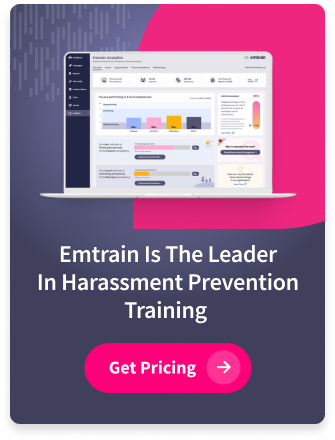Sexual harassment prevention training is one of the most demanding compliance requirements in the U.S., with mandates varying across federal, state, and local levels. For HR directors, compliance officers, and program managers, the challenge isn’t just meeting legal obligations—it’s delivering training that prevents misconduct, builds employee trust, and fosters a culture of respect.
Risks & Compliance Obligations
Workplace harassment remains one of the leading causes of employee relations claims and EEOC charges. Key compliance obligations include:
- Title VII of the Civil Rights Act prohibiting workplace discrimination and harassment.
- State mandates (California, New York, Illinois, Connecticut, Delaware, and others) require regular training for supervisors and employees.
- Industry-specific risks where power dynamics or customer-facing roles increase exposure.
Organizations that rely on outdated or generic harassment training risk noncompliance, increased claims, and reputational harm.
Policies & Training Strategies
Effective sexual harassment prevention training goes beyond definitions and legal language. Emtrain’s approach focuses on:
- Cinematic storytelling to show realistic workplace scenarios employees can relate to.
- Bystander intervention models that empower employees to step in and prevent misconduct.
- Embedded culture questions to capture employee perspectives on respect, reporting, and accountability.
- Reinforcement through microlessons that keep respect and inclusion top of mind year-round.
This approach transforms harassment training into a proactive cultural tool, not just a legal safeguard.
ROI & Culture Impact
Organizations that invest in harassment prevention training designed for cultural impact benefit from:
- Reduced legal exposure and employee relations claims.
- Increased employee trust in leadership and reporting systems.
- Healthier workplace cultures where respect is the norm.
- Greater employee retention and engagement.
By treating harassment prevention as a culture-building strategy, organizations go beyond compliance to create safer, more inclusive environments.
Actionable Steps for Organizations
- Review your state requirements. Ensure your training program meets or exceeds legal mandates.
- Adopt engaging formats. Use cinematic scenarios instead of text-heavy modules.
- Measure culture impact. Capture insights from training to identify gaps in respect or accountability.
- Reinforce regularly. Provide microlessons and manager coaching to keep training alive.
Meeting compliance obligations is only the beginning—true prevention requires an ongoing investment in culture.
Want to ensure your harassment training meets state mandates? Schedule a demo of Emtrain’s prevention programs.








